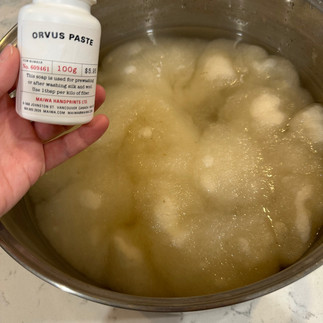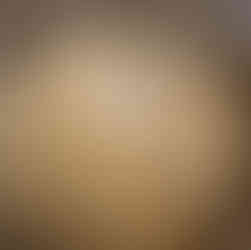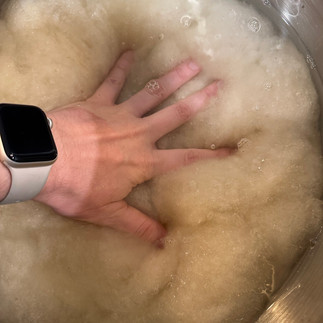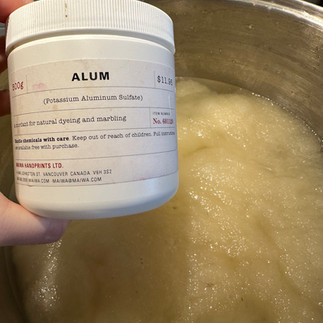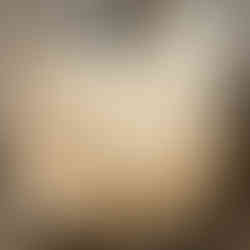Unspun wool needs to be treated with care when dying with natural materials. Unlike acid dyes, which do not require heat, many natural dyes transfer their color best under heated conditions. The goal is to avoid felting the wool during the dyeing process by treating it very gently.
Selecting Wool
Very fine wool, 20 microns or less, will be highly susceptible to felting and should be treated with the most care.
Wool batting is what I use for needle felting and what I prefer to work with for natural dyes.
Scouring Wool
Fill a large pot with enough warm tap water to cover your wool and allow it to move freely.
Add 1 tbsp Orvus paste for every kg of wool. I am working with 100 grams of wool, which requires 1.5 mL of Orvus paste.
Add your wool to the water.
Heat on low for 1 hour without stirring.
Allow the wool to cool in the water for about 1 hour. We want any dissolved waxes to leave with the water rather than reattach to the wool. So discard the water while still warm.
Pour off the water.
Add clean water to the pot & gently press the wool to squeeze out additional soap.
Repeat until the water runs clear.
Mordant
If your wool is dry, soak in warm water for at least 1 hour.
Add your wool to your pot with enough warm water to cover it and allow it to move freely.
Dissolve 10% weight of fiber of Potassium aluminum sulfate in hot water (10 grams alum per 100 grams of wool) & add to the pot with wool. We want to avoid stirring as much as possible, so we dissolve the alum before adding it to the pot. Give the wool & alum one gently stir and then leave undisturbed.
Heat on low for 1 hour.
Allow the wool to cool in the water. Leave overnight if possible.
Remove the wool from the water and rinse gently.


